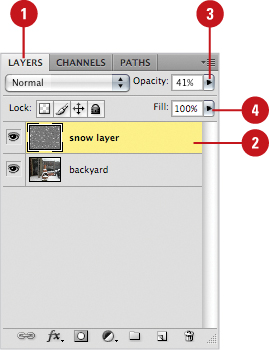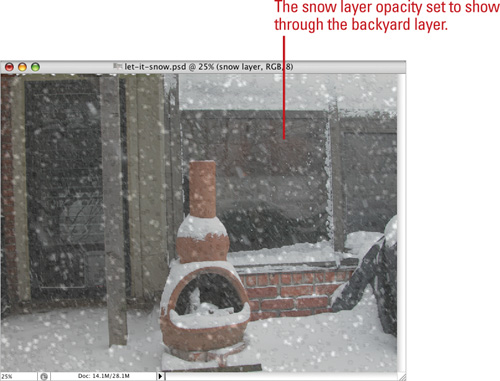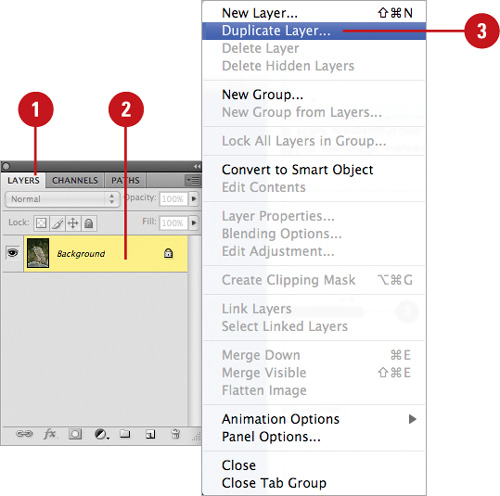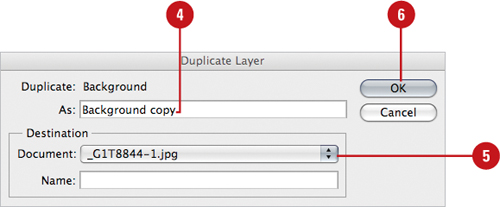1. Setting Layer Opacity
The
opacity in a layer determines the transparency of the layer beneath it.
A layer with a low opacity percentage appears as nearly transparent,
while a large opacity percentage appears as nearly opaque. You can apply
opacity to one or more
selected layers in the Layers panel. You cannot change the opacity of a
background layer or a locked layer. However, you can convert a
background layer to a normal layer and then you can apply opacity to it.
In addition to setting opacity, you can also set a fill opacity.
Opacity affects layer styles and blending modes, while fill opacity
affects pixels painted in a layer or shapes drawn on a layer without
affecting the opacity applied to any layer effects.
Set Layer Opacity and Fill Opacity
1. Select the Layers panel.

|
2. Select the layers you want to change.
|
3. To set opacity, enter a percentage value in the Opacity box or drag the Opacity slider.
|
4. To set a fill opacity, enter a percentage value in the Fill Opacity box or drag the Fill Opacity slider.
 |
2. Duplicating a Layer
There
are times when you will need a copy of a Photoshop layer. Duplicating a
layer is a simple process that creates a pixel-to-pixel copy of the
selected layer. Once the copied layer is created, it becomes a separate
image within the document. You can then begin to make changes to the new
layer. Duplicating a layer gives you the ability to control each layer
separately and to apply nondestructive effects to your image by making
them on a copy of the image instead of the original.
Duplicate a Layer
1. Select the Layers panel.
 |
2. Select the layer you want to duplicate.
|
3. Click the Layers Options button, and then click Duplicate Layer.
|
4. Enter a name for the new layer.
 |
5. To place the layer in another open document, click the Document list arrow, and then select a document.
|
6. Click OK.
Did You Know?
You can duplicate a layer with the Create New Layer button. Drag the layer over the Create New Layer button and Photoshop creates an exact copy of the layer and appends the word copy at the end of the original layer name. |